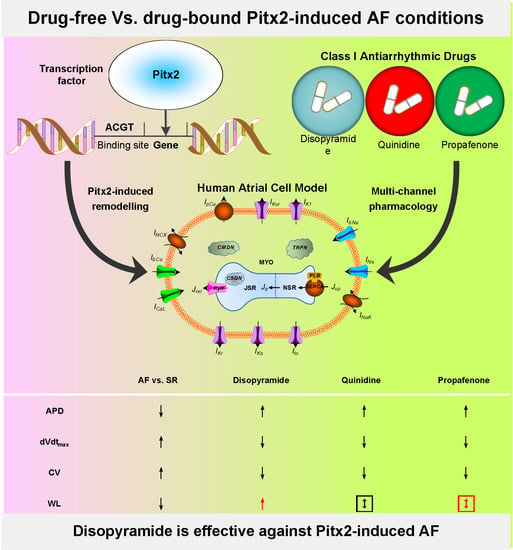In Silico Assessment of Class I Antiarrhythmic Drug Effects on Pitx2-Induced Atrial Fibrillation: Insights from Populations of Electrophysiological Models of Human Atrial Cells and Tissues
Abstract
Share and Cite
Bai, J.; Zhu, Y.; Lo, A.; Gao, M.; Lu, Y.; Zhao, J.; Zhang, H. In Silico Assessment of Class I Antiarrhythmic Drug Effects on Pitx2-Induced Atrial Fibrillation: Insights from Populations of Electrophysiological Models of Human Atrial Cells and Tissues. Int. J. Mol. Sci. 2021, 22, 1265. https://doi.org/10.3390/ijms22031265
Bai J, Zhu Y, Lo A, Gao M, Lu Y, Zhao J, Zhang H. In Silico Assessment of Class I Antiarrhythmic Drug Effects on Pitx2-Induced Atrial Fibrillation: Insights from Populations of Electrophysiological Models of Human Atrial Cells and Tissues. International Journal of Molecular Sciences. 2021; 22(3):1265. https://doi.org/10.3390/ijms22031265
Chicago/Turabian StyleBai, Jieyun, Yijie Zhu, Andy Lo, Meng Gao, Yaosheng Lu, Jichao Zhao, and Henggui Zhang. 2021. "In Silico Assessment of Class I Antiarrhythmic Drug Effects on Pitx2-Induced Atrial Fibrillation: Insights from Populations of Electrophysiological Models of Human Atrial Cells and Tissues" International Journal of Molecular Sciences 22, no. 3: 1265. https://doi.org/10.3390/ijms22031265
APA StyleBai, J., Zhu, Y., Lo, A., Gao, M., Lu, Y., Zhao, J., & Zhang, H. (2021). In Silico Assessment of Class I Antiarrhythmic Drug Effects on Pitx2-Induced Atrial Fibrillation: Insights from Populations of Electrophysiological Models of Human Atrial Cells and Tissues. International Journal of Molecular Sciences, 22(3), 1265. https://doi.org/10.3390/ijms22031265







